Faculty Perspective: Lima
Merging scientific disciplines
[[ PAGE BANNER: see the home page instructions for adding new images. Image should be 864 pixels wide by any height. ]]
An interview with Christopher Lima
Q
A
Is there anything that characterizes TPCB students in your mind?
Chemical biology students tend to be on the adventurous side; they are often classically trained as chemists but looking to apply these tools in new ways. Traditionally biochemistry departments were part of chemistry departments, but now we have new tools to apply to a new set of problems that students would not necessarily be exposed to in a chemistry graduate program. We are also not traditional in other ways. TPCB doesn’t have a conventional departmental affiliation; students are coming into a unique environment compared to other universities. We see a great deal of excitement in students who have the chance to merge disciplines.
Q
A
Why are there such high levels of collaboration at TPCB? It is a word that one hears often.
Collaboration is central because the program, in and of itself, is a collaboration, an alliance of all three corners of the street. Our students bring us together. One good example was a collaboration with a TPCB alumnus, Jayakrishnan Nandakumar (JK). He worked with my TPCB colleague, Stewart Shuman, with whom I published more than a dozen papers. Stewart and I were collaborating on research on RNA repair enzyme structures, but the fantastic thing is that JK developed a new project that spanned from initial biochemical characterization all of the way through to deciphering the structural basis for his biochemical observations. JK first worked in Stewart’s lab full time, where he developed a number of assays to characterize the RNA ligase mechanism. He then came to my lab to determine the structures of the most interesting intermediates along the reaction pathway by trapping each of them in a crystal. The collaboration within TPCB chemical biology was the catalyst for our success and JK was the sole first author of a paper published in the journal Cell that detailed his structural results.
The faculty and research labs also benefit from collaboration. For example, Derek Tan, Director of the TPCB was invited to our structural biology lunch to present his research, and I realized that a certain class of inhibitors he had developed as antibacterials could also be used to probe activities in the E1-ubiquitin pathway. We have worked on the project for five years together and, as a chemist, he has created clever chemical strategies to address key structural and biochemical questions in the pathway. This collaboration continues, and I wouldn’t have known about Derek’s work without being part of the TPCB joint faculty.
Q
A
What is the most important thing you believe you offer your students?
In addition to being a faculty member and researcher, I am also a department chair and graduate program chair, and have also served as a journal editor, NIH Study Section chair, and scientific meeting organizer. I think these experiences enable me to provide a well-rounded educational environment for members of the lab. A lot of energy goes into being a working scientist. It is a tough job but a great job, one where you direct your own destiny. Bringing all these things together, and sharing them with students, gives them a broader sense of what it means to be a member of the scientific community.



